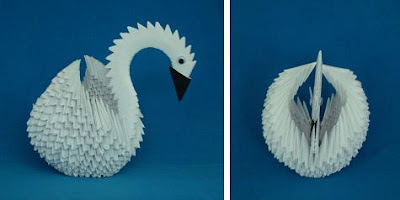 |
| Image Source: Origami Resource Center |
Thirty years ago, a professor in Japan folded an origami crane smaller than a pinhead. Peering through a microscope, he used a sewing needle to carefully crimp the paper.
Now researchers at Cornell University in Ithaca, New York, have gone one step further, creating origami about the size of a red blood cell. Too small for human hands, their origami folds itself. This new take on an old tradition is made not from paper, but from sheets of glass and carbon only a few atoms thick.
“It’s the world’s thinnest origami … comparable in size to a biological microorganism,” said Marc Miskin, a postdoctoral associate in the laboratory of applied physicist Itai Cohen at Cornell. He described the new research in a March 14 talk at an American Physical Society meeting in New Orleans.
The simple shapes formed by the micro-gami, such as cubes and pyramids, lack the grace and sophistication of a bird. But they could be a step toward miniature machines that fold themselves up into packages small enough to be injected into the body.
Inside Science: World's Thinnest Origami Could Build Microscopic MachinesDevin Powell
Comments